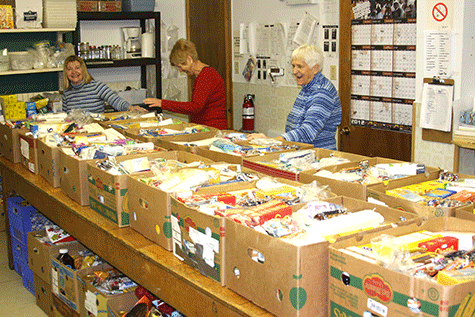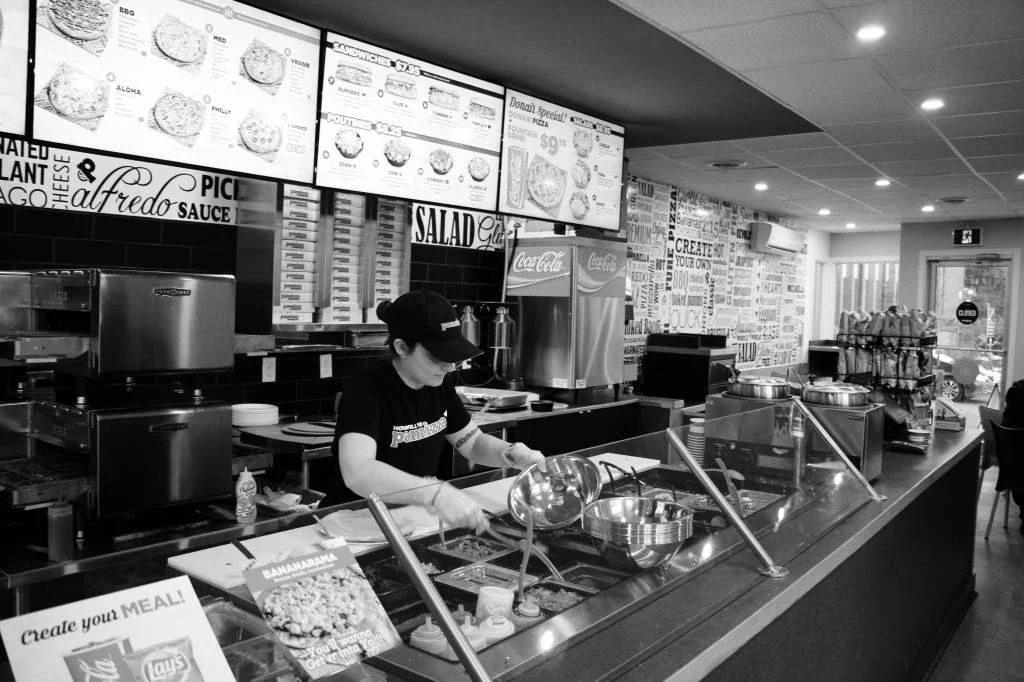The Rise of Food Trucks in Antigonish
/The Frankenstand: A spookily delicious hot dog stand
At the back of the Shoppers Drug Mart Parking lot, on the edge of the river, lies a peculiar looking food truck emblazoned with green, black and orange colors. Its aptly named The Frankenstand, and it’s the home to foot long hot dogs… with a twist. A Caesar salad on top of a hot dog? Yep. Chili, bacon, sauerkraut? That too. For owner Kirk Jones, the name is based after his favorite childhood character.
Photo: Bowen Assman
“I love Frankenstein, everything about it. That is why everything is based off of it. All of our menu items have some relation to Frankenstein, such as The Bride, and the Thing.”
For Kirk, his stand opened at the beginning of May and is most certainly a family affair. His wife Tracy and children work the truck, preparing food and collecting the money. It is a great educational tool to teach his son.
“We do not keep a calculator, so when he takes orders, he has to calculate the pricing and give back the correct amount. Because of this, it has improved his math skills”
He wanted to appease to the younger crowd, mainly the students. The idea of having a hot dog stand is unique to Antigonish, a town densely populated by pizza joints. As of now, the menu consists of hot dogs, burgers and onion rings. As young as the truck is, the plans for the future are wide ranging.
“My plan is to buy a six-wheeler, so I can have a bigger shop, and move our current truck to a permanent spot on the beach. We have been in talks with the city to have this whole parking lot become a sort of food court, with an array of choices from different food trucks dotting the lot.”
In terms of new menu ideas, the idea of a foot-long French fry is in the works. Yes, a singular foot long French fry, something that would blow up the traditional fry culture, if done correctly.
While he has a lot of future ideas, he is more than content with where he is right now. At any point during the days, and the numerous times I was present at the truck, there was no shortage of children, students, and locals all coalescing with Kirk near the truck. The friendly atmosphere really belies their slogan of “Monster-sized food, friendly service”. The real powerhouse is Tracy, who tirelessly works behind the BBQ in the heat to provide the food to everyone.
What Kirk touched on repeatedly was his insistence on giving back to the customers who visit his truck, and helping those who are in need.
“If someone is hungry, just come by the shop and you will be fed. I do not want to see students go hungry, they pay enough for tuition and textbooks.”
Photo: Bowen Assman
Across the parking lot is an elder statesman of the food truck industry, Little Asia. The truck opened way back in 2016, and has enjoyed relative success, albeit spotty in it’s customer base. Little Asia’s owner, Melvin is happy that they have an outlet to serve their native food to anyone who is interested. Having the ease of a food truck makes life easier, with cheaper rent, and less maintenance costs then a brick and mortar storefront.
What is clear is that the rise of food trucks greatly decreases barrier-to-entry costs, forging the opportunity for more trucks to pop up around town, and maybe, just maybe, take a slice out of the Kenny and Wheel student stranglehold for late night eats.














